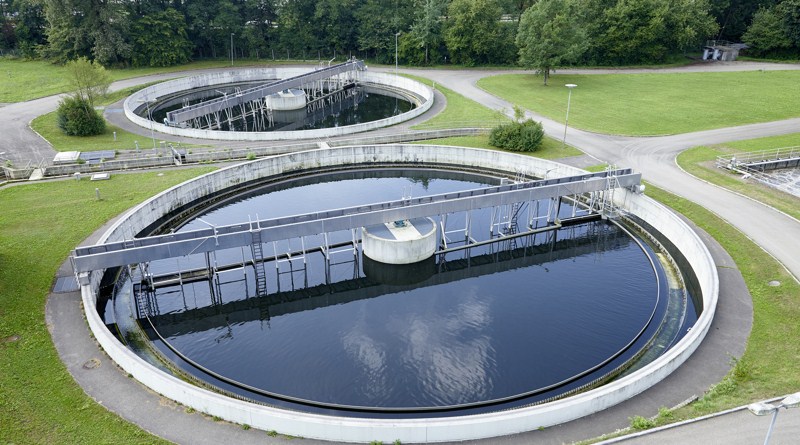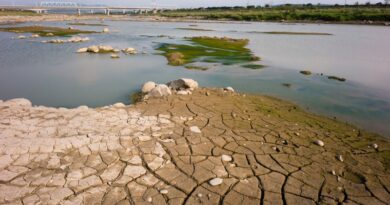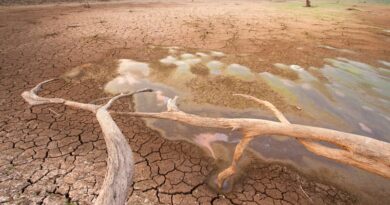Half of global wastewater now getting treated; rates in developing countries still lagging

The use of unconventional water resources, including desalination and wastewater treatment & reuse, has grown rapidly in the last few decades in a bid to keep pace with growing worldwide demand.
It has been well recognised that continually improving and affordable wastewater management provides opportunities for both pollution reduction and clean water supply augmentation. This also promotes sustainable development and supports the transition to a circular economy.
Now, a new study by scientists at Utrecht University and the United Nations University has concluded that about half of global wastewater is getting treated, much more than the 20 per cent estimated previously. But, despite this promising finding, treatment rates in developing countries still remain very low.
The study aims to provide the first comprehensive and consistent global outlook on the state of domestic and manufacturing wastewater production, collection, treatment and reuse. The team of scientists used a data-driven approach, collating, cross-examining and standardising country-level wastewater data from online data resources. Where unavailable, the team estimated data using multiple linear regression.
It is increasingly recognised that conventional water resources such as rainfall, snowmelt and runoff captured in lakes, rivers and aquifers are insufficient to meet human demands in water-scarce areas. While increases in water use efficiencies can somewhat reduce the water demand–supply gap, these approaches must be combined with supply and quality enhancement strategies, the team said.
“Globally, about 359 billion cubic metres of wastewater is produced each year, equivalent to 144 million Olympic-sized swimming pools,” said PhD researcher at Utrecht University and lead author of the study Edward Jones.
“About 48 per cent of that water is currently released untreated. This is much lower than the frequently cited figure of 80 per cent.”
While the results show a more optimistic outlook compared to previous work, the authors stressed that many challenges still exist.
“We see that particularly in the developing world, where most of the future population growth will likely occur, treatment rates are lagging behind,” Jones said.
“In these countries in particular, wastewater production is likely to rise at a faster pace than the current development of collection infrastructure and treatment facilities. This poses serious threats to both human health and the environment. There is still a long way to go.”
According to the team, the main problem, especially in the developing world, is the lack of financial resources to build infrastructure to collect and treat wastewater. This is particularly the case for advanced treatment technologies, which can be prohibitively expensive. However, the authors highlight potential opportunities for creative reuse of wastewater streams that could help to finance improved wastewater treatment practices.
“The most obvious reuse of treated wastewater is to augment freshwater water supplies,” Jones said.
Treated wastewater reuse is already an important source of irrigation water in many dry countries, particularly in the Middle East and North Africa. However, only 11 per cent of the wastewater produced globally is currently being reused, which shows large opportunities for expansion.
“But freshwater augmentation is not the only opportunity,” said Jones. “Wastewater also has large potential as a source of nutrients and energy. Recognition of wastewater as a resource, opposed to as waste, will be key to driving improved treatment going forward.”
However, the authors stressed the importance of proper monitoring of wastewater treatment plants, accompanied by strong legislation and regulations, to ensure that the reuse of wastewater is safe. The authors also acknowledge public acceptance as another key barrier towards increasing wastewater reuse.
Unconventional water resources encapsulate a range of strategies across different scales, from localised fog-water and rainwater harvesting to mega-scale desalination plants and wastewater treatment and reuse facilities. The use of unconventional water resources has grown out of necessity and their importance across various geographic scales is already irrefutable.
Furthermore, continually improving unconventional water resources technologies have permitted more efficient and economical “tapping” of water resources, which were previously unusable due to access constraints or the added costs related to unsuitable water quality (e.g seawater desalination and wastewater treatment), the team noted in the study.




